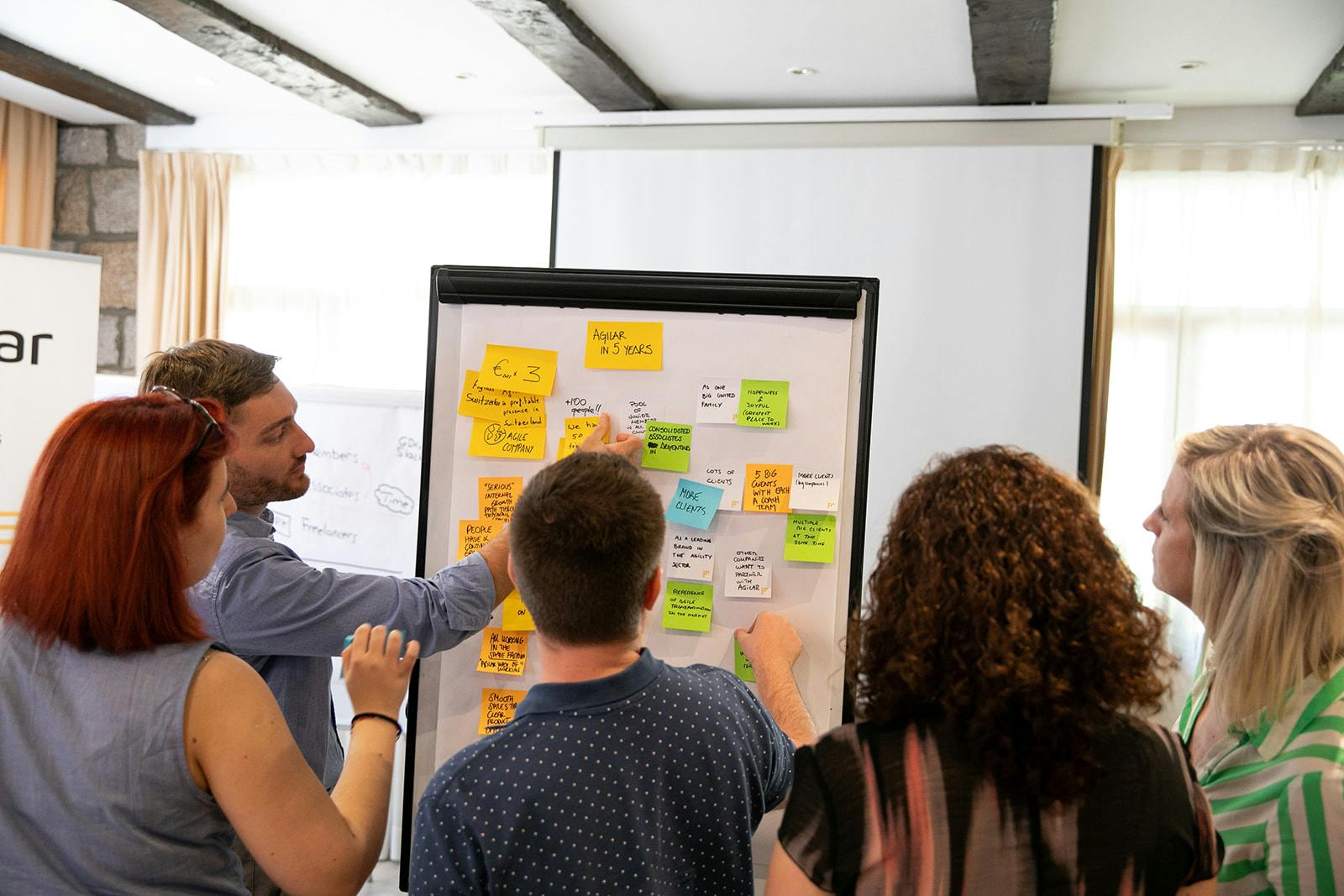Six lessons from a global CPG company’s Agile Transformation

Agilar Team
25 Jul, 2025
business agility
business agility

In the world of large enterprises, transformation is often imagined as a dramatic overhaul—strategic blueprints, big announcements, and mandatory rollouts. But what if real, lasting change doesn’t start that way at all?
What if it begins with a whisper? A conversation. A pilot. A single person with a bit of freedom and a lot of curiosity.
That’s exactly what happened inside a global consumer packaged goods (CPG) company. Instead of forcing Agile across the organization, the company gave one internal Agile Champion a simple mandate: go where there’s energy. No roadmap. No models. Just explore.
What followed wasn’t just a change in process—but a shift in mindset, culture, and how the business delivers value. With Agilar’s support, this quiet, bottom-up approach grew into an Agile transformation spanning dozens of teams and touching leadership, governance, and outcomes.
Here’s what we can learn from their journey.
1. Big change starts small
The transformation didn’t begin in the boardroom—it began on the ground. One person was tasked with exploring Agile, given a small budget and wide latitude. Instead of starting with a top-down rollout, the change grew through pilots sparked by curiosity and business pain.
Teams with real challenges asked for help. And help came not in the form of frameworks, but conversations. Agile wasn’t imposed; it was invited.
Lesson: You don’t need a grand plan to start. Sometimes the most powerful change begins with a question: “Where could this help?”
2. Let pull replace push
Unlike traditional change programs, where compliance is expected, this transformation relied entirely on pull. Teams had to want it.
That desire emerged quickly—especially in high-pressure, results-driven environments like marketing, revenue growth, and innovation teams. Agile became a lifeline, not a burden. And as more teams experienced results, momentum took care of itself.
Lesson: Let teams come to you. Transformation sticks better when people ask for it—rather than being told to adopt it.
3. Speak the language of business
No Scrum glossaries. No scaled Agile models. The Agile Champion and coaches made a deliberate choice: talk outcomes, not rituals.
Every pilot was framed in terms of value, urgency, and clarity. What’s the problem? What do we need to achieve? Agile practices were quietly embedded—never branded or prescribed.
Lesson: If you want Agile to resonate, ditch the jargon. Meet people where they are—with their goals, their context, and their pressure to perform.
4. Build enablement, not enforcement
As adoption grew, the company created a Center of Excellence (CoE). But this wasn’t a rule-setting body. Instead, it functioned as a support system—helping teams make Agile work for their context, offering coaching, and sharing insights across the organization.
There was no drive to standardize prematurely. The goal wasn’t consistency—it was effectiveness.
Lesson: Empower teams. A CoE should coach, not command. The best transformations grow through enablement, not enforcement.
5. Grow leadership alongside the teams
Initially, leaders asked for Agile training. But as the transformation matured, something more important happened: they began to reflect. Not just on Agile, but on how decisions were made, how governance worked, and how their role needed to evolve.
Agile wasn’t just about teams; it was about leadership stepping into a different kind of stewardship—less about control, more about clarity and support.
Lesson: Real change requires leaders to evolve too—not just approve training, but reimagine their own ways of working.
6. Ditch the blueprint, trust the journey
One of the most powerful aspects of this story is what didn’t happen: there was no company-wide Agile framework. No branded model. No press release.
Instead, coaches adapted to each team. They let patterns emerge over time. Success came not from control, but from trusting the work, the people, and the process.
Lesson: Don’t start with a model. Start with listening. Every organization’s path is unique—allow yours to unfold with intention, not prescription.
Conclusion: Momentum that sticks
This global CPG company didn’t change overnight. It didn’t declare a transformation. It simply followed the energy—supporting what worked, learning from what didn’t, and always putting value first.
The result? Agile became part of how the organization solves problems, not just how it runs meetings. What started as a whisper became a hum—then a rhythm. One that continues to grow.
Maybe that’s the biggest lesson of all: change that lasts doesn’t start with a bang—it starts with belief.